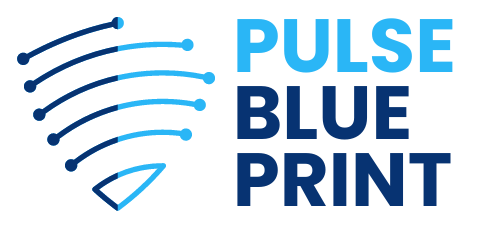An online community is a group of people who gather on digital platforms to share common interests, engage in discussions, and build relationships.
For creators, these communities play a crucial role in fostering engagement, cultivating brand loyalty, and opening doors to various monetization opportunities.
Building a thriving community helps creators grow their audience, strengthens connections, and enhances long-term sustainability.
Let us talk about how you can achieve this as a creator.
Step-by-Step Guide to Building a Thriving Online Community
The first step in creating a successful online community is understanding why you want to build one.
Communities provide a platform for deeper audience engagement, promote business growth, and help strengthen customer loyalty.
An online community can act as a valuable extension of your brand, driving conversations and fostering meaningful interactions.
Once you establish your purpose, it’s essential to identify your target audience.
- Demographics (age, location, gender)
- Psychographics (interests, behavior, challenges)
Crafting a member persona can help guide your communication style, content, and overall strategy, ensuring the community remains relevant and engaging.
Choose the Right Community Platform
Selecting the right platform is a critical decision in building your online community.
- Free platforms
- Owned platforms
Free platforms like Facebook Groups offer ease of access, a built-in audience, and integrated features, but they lack control and scalability.
On the other hand, owned platforms like Mighty Networks or LearnWorlds provide more customization, monetization opportunities, and control over data, making them ideal for businesses looking for long-term growth.
When choosing a platform, consider several criteria: ease of use, monetization options, scalability, and mobile accessibility. A platform that allows seamless communication, offers features to create subscription tiers and adapts as your community grows will help ensure success.
The right platform will serve as the foundation for engagement, content sharing, and overall interaction.
Develop a Clear Value Proposition and Mission
A strong community starts with a clear value proposition. Craft a concise purpose statement that defines what transformation or value your community offers.
- Education
- Support
- Inspiration
- Entertainment
Your mission should communicate the benefits that members will gain by joining and participating in the community.
To build a deeper connection, use personal or brand stories that resonate with your audience. Sharing your experiences, challenges, or vision helps humanize the community and fosters trust.
People are more likely to engage when they feel they are part of something meaningful that aligns with their values or goals.
Create and Set Up Your Community
The structure of your community plays a vital role in its success. Organize the community into clear categories, subtopics, and channels that resonate with your audience.
- Tutorials
- Live events
- User-generated posts
Setting community guidelines is essential for maintaining a positive and respectful environment.
Establishing rules around behavior, content sharing, and communication style ensures that everyone feels safe and welcome.
These guidelines should also reflect the tone and culture you wish to foster. Incorporating branding elements, such as logos and color schemes, helps reinforce a professional and cohesive atmosphere.
Implementing gamification elements like badges, leaderboards, and point systems can significantly enhance engagement.
Offering incentives such as special access to events, discounts, or recognition also drives ongoing engagement and loyalty.
Promote and Launch Your Community
Before going public with your community, consider conducting a soft launch. A soft launch allows you to test the platform with a select group of trusted users.
This test run helps identify potential issues, gather feedback, and fine-tune the community’s structure before opening it to a larger audience.
It also gives you a chance to engage your first members personally, ensuring they feel valued.
When you’re ready for a full launch, create a comprehensive promotional strategy.
Utilize social media platforms, email marketing, and collaborations with influencers to spread the word. Building excitement around the launch is key to attracting initial members.
Hosting webinars or live Q&A sessions can also generate interest and provide potential members with a clear understanding of the community’s value.
Fostering Engagement and Growth
Once your community is live, maintaining momentum is crucial. Encourage discussions by asking thought-provoking questions, hosting live events, or organizing webinars.
User-generated content, such as testimonials or success stories, can serve as a valuable engagement tool.
As mentioned earlier, gamification plays a significant role in fostering engagement.
Continue using badges, shoutouts, and perks to reward your most active members. Recognition helps build a sense of belonging and achievement, driving consistent participation.
You can also host monthly or quarterly challenges to keep the excitement alive and encourage new members to get involved.
Providing exclusive and valuable content on a regular basis is the key to keeping the community active.
- Blog posts
- Podcasts
- Tutorials
- Behind-the-scenes insights
Consistent interaction, whether through comments, live streams, or direct messages, also strengthens the relationship between members and the community leader.
Moderation and Community Management
A well-moderated community ensures a positive experience for all members. Assign roles for moderators and community leaders to maintain order and set the tone.
Moderators can help resolve conflicts, enforce guidelines, and engage with members daily.
Additionally, as the community grows, consider scaling moderation efforts by empowering trusted members to take on leadership roles.
Developing conflict resolution protocols is crucial to handle disputes professionally and maintain a healthy atmosphere.
Proactive moderation ensures that minor issues don’t escalate and that everyone feels respected within the community.
Measuring Success and Adjusting Strategy
Tracking the right metrics helps measure the success. Engagement metrics such as the number of posts, comments, shares, and reactions indicate how active your community is.
Retention rates measure how well you’re keeping members over time, while conversion rates (if applicable) show the effectiveness of your monetization strategies.
Regularly gather feedback from your members to improve their experience.
Surveys, polls, and direct conversations can offer valuable insights into what is working and what areas need adjustment. Analyzing this feedback ensures that you can make informed decisions to optimize your community’s growth.
The Bottom Line
To sustain and grow your community, remain adaptable to changes based on feedback and trends.
Continuously evolving with the needs of your members will ensure long-term success. Engaging with your community regularly, listening to their feedback, and keeping your value proposition strong will lead to a vibrant and thriving online space.
Hello, my name is James Willett. I am a marketing veteran, with decades of experience under my belt. At one point, I decided to share my experience with others, especially those who are making baby steps in marketing. Therefore, I decided to join fine folks at PulseBluePrint.com where I share my insights on all sorts of marketing. I hope you will find my insights useful.











